An exploration into science and art
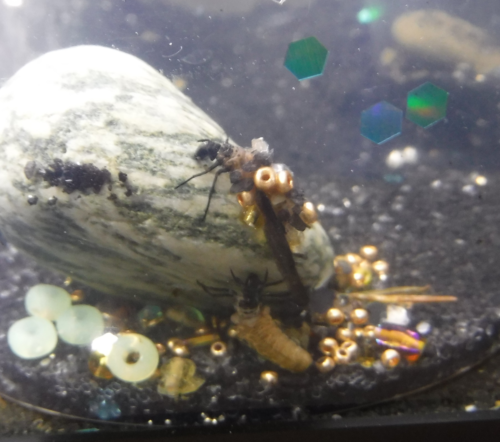
By Holli Watne, graduate student in the Institute’s 15th Cohort.
I have a deep love for entomology and artistic exploration. Until recently, I viewed these two pleasures as mutually exclusive. My perception changed when I was introduced to the work of Hubert Duprat. He has been working with Trichoptera (one of my favorite orders of insects) since the 1980’s, getting them to build beautiful structures out of precious materials. (For more information of Mr. Duprat’s work, please read this article.)
Trichoptera, commonly known as caddisflies, can be found in all biogeographical regions, except the Antarctic, in (larvae) or near (adult) a large range of aquatic habitats. There are about 1,400 species of Trichoptera in North America, 230 of which have been identified in Washington State. The majority of species have aquatic larvae that build cases out of silk and various natural materials. These cases aid in streamlining substrate-attachment and protection against predators.
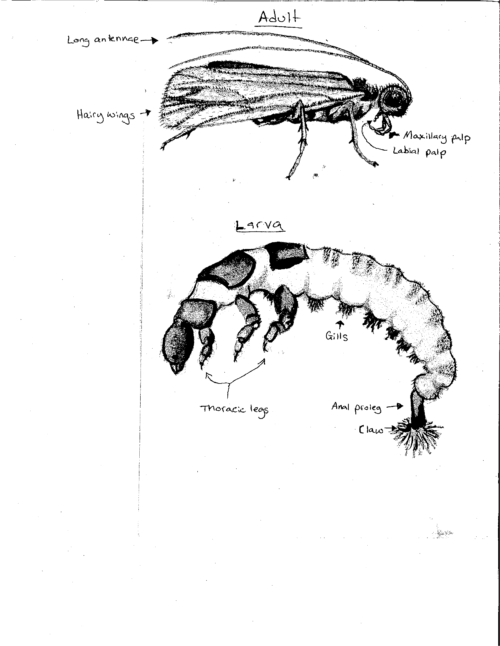
Trichoptera, or caddisfly, larva. Drawn by Holli Watne.
In my undergrad studies at Western Washington University, I remember my entomology professor telling me that entomologists that specialize in Trichoptera can frequently identify the species just by looking at a case. This is because each case-building species has characteristic ways of building their cases. Using Duprat’s work as an inspiration, I started a simple study to see if larvae would build cases that are structurally similar to their native cases when provided with a choice of unfamiliar building materials.
Being a poor grad student, it wasn’t really an option for me to use such fine materials as Duprat uses in his work. Instead, I introduced the caddisflies to various beads and different sizes of glitter:
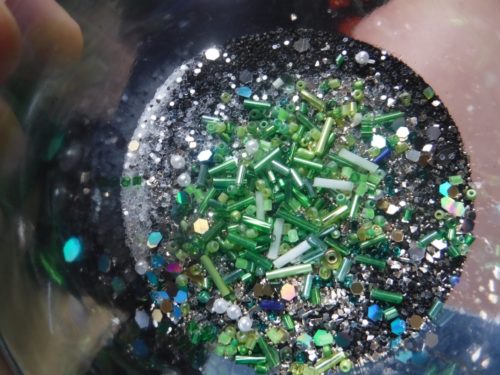
My experimental design: in a 5-gallon aquarium, I had planned to sort locally-sourced caddisflies, removed from their native cases, into chambers with a variety of building materials (as shown above). I would compare the native cases of each caddisfly to the one they would presumably build out of the new material and see how structurally similar they were.
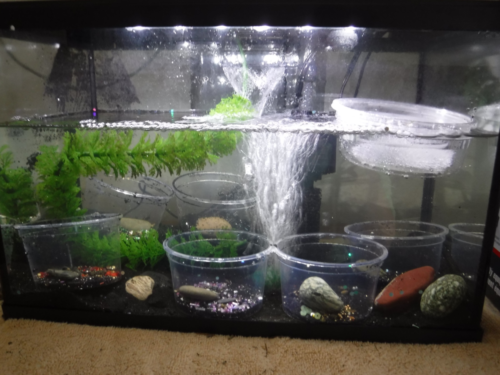
Experimental set-up
The specimens that I had to work with had several district case forms and ranged in size from this:
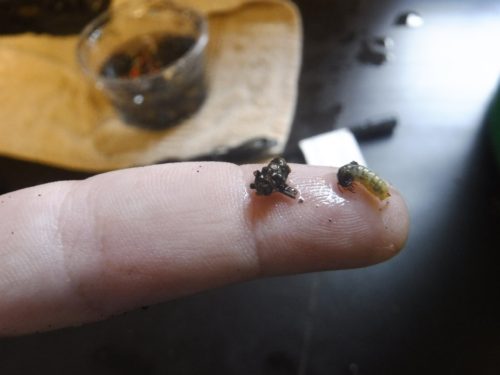
To this:
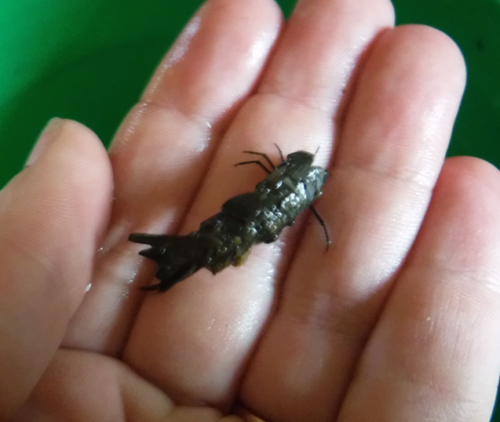
Results: Only 10 out of the 28 caddisflies incorporated the new material into their case. Roughly half of specimens died before the experiment was complete. I was not able to support my hypothesis due to insignificant data. Also, the data I did collect wasn’t reliable because the larvae were capable of migration from one chamber to another and so I wasn’t sure whose original case belonged to whom.

Though this experiment didn’t end up being very useful in the realm of science I did learn a bit about the building behavior of Trichoptera and I would be much better suited to run better experiments of a similar nature in the future. I learned something by trial and error – therefore this totally was a successful scientific endeavor!
For more information on Trichoptera check out:
- “Tolerance Values and Effects of Selected Environmental Determinants on Caddisfly (Trichoptera) Distribution in the North West and North Central Wasington, USA.” -Blinn, D and Ruiter, D.E.
- “National Wildlife Federation’s Field Guide to Insects and Spiders of North America.” Evans, A.E.
- “The Insects: An Outline of Entomology” -Gullan, P.J. Cranston, P.S.

